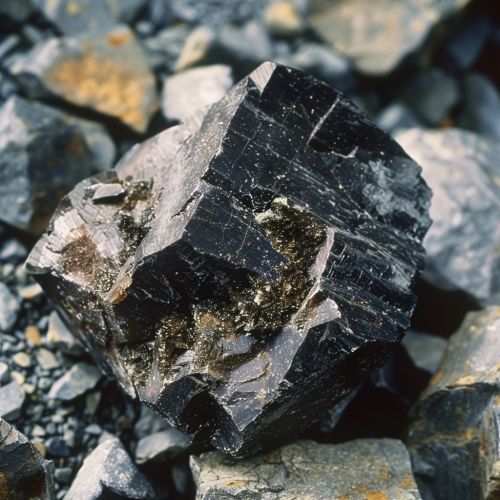Uranium-Lead dating
Introduction
Uranium-Lead (U-Pb) dating is a method of radiometric dating that uses the decay chain of uranium and lead isotopes to find the age of a rock sample. It is one of the oldest and most refined of the radiometric dating schemes, with a routine age range of about 1 million years to over 4.5 billion years, and with routine precisions in the 0.1-1 percent range.


Principles of Uranium-Lead Dating
The uranium-lead dating method relies on two separate decay chains, the uranium series from 238U to 206Pb, with a half-life of 4.47 billion years and the actinium series from 235U to 207Pb, with a half-life of 704 million years. These decay chains involve a series of different elements and physical decay processes, all of which affect the final result of the age measurement.
Uranium Decay Series
The uranium decay series involves several isotopes, which are all part of the overall decay chain. The series starts with the decay of 238U to 234U through alpha decay, which continues through a series of alpha and beta decays until it ends with the stable isotope 206Pb.
Actinium Decay Series
The actinium decay series is shorter than the uranium series, with fewer isotopes involved. It starts with the decay of 235U to 231Pa through alpha decay, and ends with the stable isotope 207Pb.
Uranium-Lead Dating Techniques
There are several techniques available for uranium-lead dating. The most commonly used techniques involve the measurement of isotopic ratios in a sample, and the use of these ratios to calculate the age of the sample. These techniques include:
- Isochron dating
- Concordia techniques
- Discordia techniques
Isochron Dating
Isochron dating is a common technique of radiometric dating and is applied to date certain events, such as crystallization, metamorphism, shock events, and differentiation of precursor melts, in the history of rocks.
Concordia Techniques
Concordia techniques involve the plotting of 238U/206Pb and 235U/207Pb ratios in a sample on a concordia diagram. This diagram has been used to interpret the isotopic compositions of a sample and to calculate its age.
Discordia Techniques
Discordia techniques involve the plotting of data points that do not fall on the concordia curve, indicating that the sample has been disturbed and that the age calculated from the 238U/206Pb and 235U/207Pb ratios may not be accurate.
Applications of Uranium-Lead Dating
Uranium-lead dating is often performed on the mineral zircon, as well as other minerals such as monazite, titanite, and baddeleyite. It is also used in dating metamorphic rocks, as it can provide information about the time of metamorphism. Uranium-lead dating is also used in dating ancient rocks on the Moon and meteorites.
Limitations and Challenges
While uranium-lead dating is highly accurate, it also has its limitations and challenges. These include the difficulty in ensuring that there has been no lead loss or uranium gain by the sample over time, the assumption that the rate of decay has remained constant over time, and the assumption that the sample has remained a closed system.
